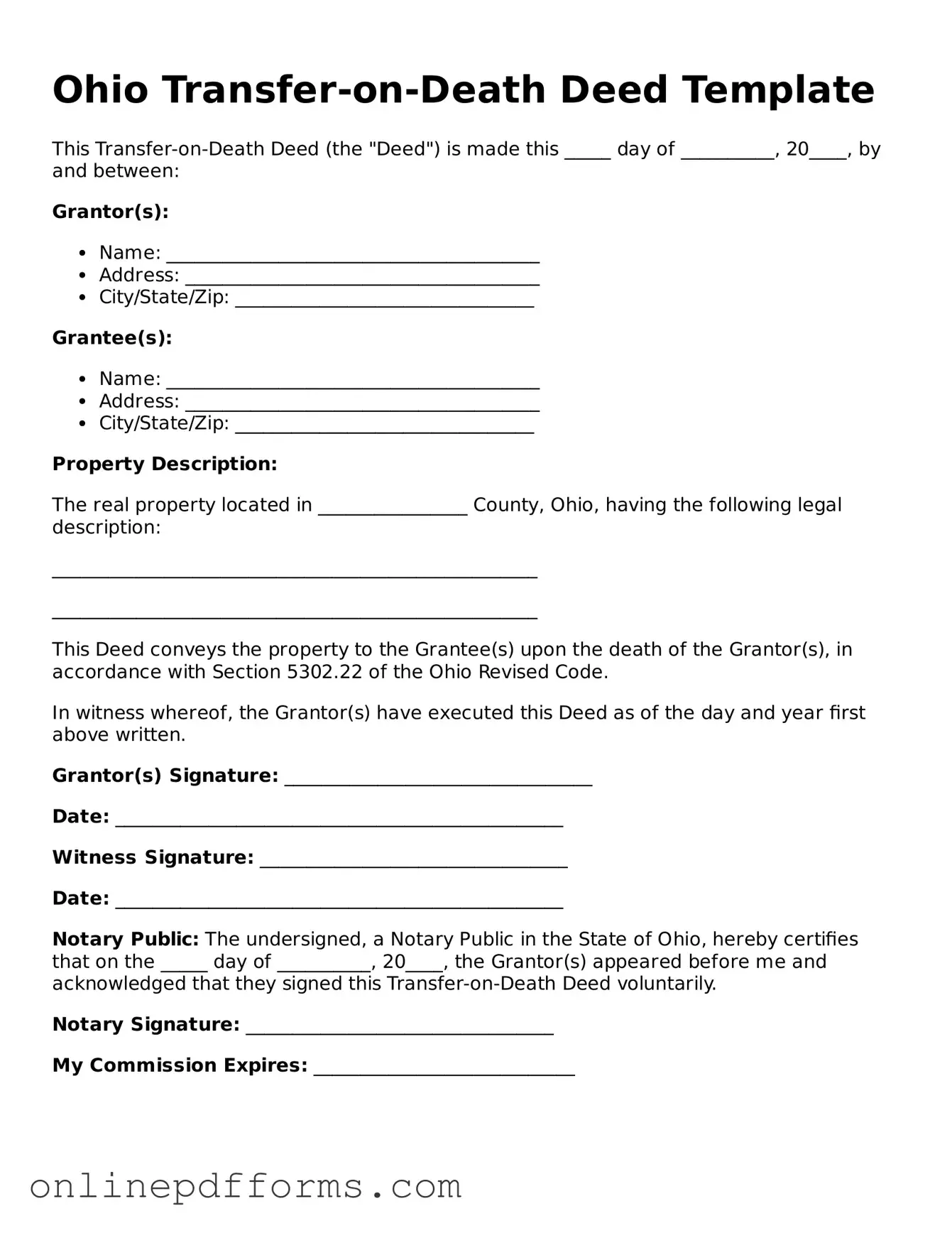Blank Ohio Transfer-on-Death Deed Form
The Ohio Transfer-on-Death Deed form allows property owners to transfer their real estate to designated beneficiaries upon their death, avoiding the probate process. This legal tool provides a straightforward method for individuals to ensure that their property is passed on according to their wishes. To begin the process of filling out the form, click the button below.
Open Transfer-on-Death Deed Editor Now
